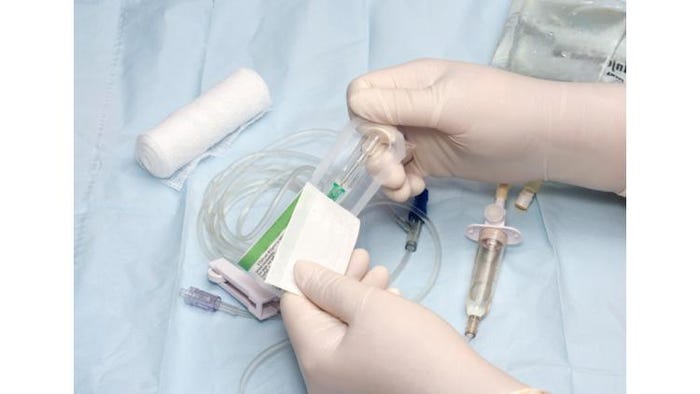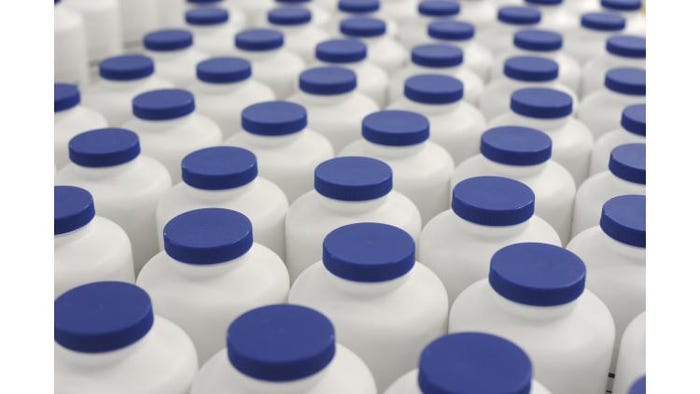Top 7 trends in healthcare packaging
December 13, 2016

Much more is required of packaging for pharmaceuticals and medical devices these days. In 2016, healthcare packaging professionals managed several emerging regulatory requirements and market demands. We count down to the top trends impacting packaging decisions, as evident in seven of 2016's most popular articles on pharmaceutical and medical device packaging issues.
7. We start with Unique Device Identification (UDI). This year, medical device manufacturers had to ensure that their Class III devices were permanently marked with UDI on the devices themselves if they are intended to be used more than once and are intended to be reprocessed before use. In addition, all Class II devices all had to carry UDI on their labels and packages, and the dates on these labels must meet formatting rules (implantable, life-saving, and life-sustaining Class I and II devices have had to carry UDI labeling since September 2015).

Kasey Tipping of Cognex authored an article addressing some of the readability issues medical device manufacturers are encountering with UDI codes and how sophisticated vision technology could help address them. Her article, "8 potential UDI code readability issues and the critical role of vision," was the 7th most popular trend article in terms of total page views for the year. The image above shows one solution for overcoming warped 2-D DataMatrix codes or codes with missing perimeter features, Cognex's 2DMax with PowerGrid algorithm. Please see Tipping's article for more details and the 8 potential challenges.
NEXT: Drug Master File Changes
![]()
6. Drug Master File Changes
FDA is switching its current paper system for accepting Drug Master File (DMF) information to an electronic one. This means that packaging material suppliers that hold Type III DMFs will need to use FDA's electronic Common Technical Document (eCTD) system as of May 2017 for new DMFs, annual reports, and amendments, Frank Bieganousky, managing director and cofounder of Montesino Associates, told us earlier this year. Our article on a Feb. 4 webinar held by FDA’s CDER Small Business and Industry Assistance (CDER SBIA), “New Requirement for Electronic Submission of Drug Master Files (DMFs): What You Need to Know,” was our 6th most popular trend article.
We've published a few additional articles on the topic: "Do you know where your suppliers are when it comes to eDMFs?" and "The latest on Drug Master Files for packaging materials in the United States--and a little history."
NEXT: Usability

5. Usability
HealthPack is known for its lively Voice of the Customer panel during which nurses and other medical technicians provide live feedback on packages as they are opened. This year's event provided valuable feedback, and one of the concerns emphasized was opening packages quickly. “The faster you can open a product, the better,” one professional told the audience this year. Our article, "HealthPack 2016: Users prefer time-saving packages," was our 5th top trend article.
NEXT: Sustainability

4. Sustainability
For years the Healthcare Plastics Recycling Council has been exploring the opportunities—as well as the challenges—for healthcare plastics recycling. This year the group announced a project in Chicago to demonstrate the economic viability of healthcare plastics recycling called the “100 Tons Project.” Our 4th top trends article, "Examining the value of healthcare plastics recycling," announced the project as well as the impact of Europe's emerging Circular Economy Package.
Interest in sustainability was also seen in a series of other articles we published this year on Bella the Bride, a wedding gown commissioned by Beacon Converters that was made of discarded Tyvek. The dress, made by sustainable fashion artist Nancy Judd (known for the Recycle Runway Collection), was showcased at this year's Medical Design & Manufacturing East. Bella the Bride encourages the industry to “look at waste as resources, not garbage,” Terri Shank, Beacon’s sustainability officer/director of IT & marketing projects, told PMP News earlier this year. To learn more about Bella the Bride’s story, please read "Healthcare packaging waste issues discussed at MD&M East thanks to Bella the Bride," "MD&M East welcomes Bella the Bride to showcase sustainability," and “Say I Do to Material Recovery.”
NEXT: Patient-centric packaging
3. Patient-centric packaging
Pharmaceutical and medical device packaging will need to serve these patients/consumers differently than it has ever done before. Such was the message from Peter Schmitt, managing director of Montesino Associates, who spoke at Pharmapack Europe 2016 during the presentation, "Boomers, millennials, and the future of packaging materials." In our 3rd most popular trends article, "Change is coming to pharma packaging, predicts PharmaPack Europe speaker. Are you ready?" Schmitt points out that significant societal changes brought about by disrupters Apple, Google, Amazon, and others may also change healthcare, and therefore change packaging.
Schmitt will be speaking on another topic at Pharmapack Europe 2017 on February 1: Brazil's latest regulatory serialization guidelines and implications. He'll look at prior regulations and new ones and the timeline for implementation as well as offer a comparison with requirements in United States and Europe.
NEXT: USP packaging chapter changes

2. USP packaging chapter changes
Several U.S. Pharmacopeia packaging chapters saw significant changes or expansions over the last year or so. For instance, USP Chapter <661> Containers-Plastics includes new responsibilities that may apply to new packages. Our article, "Are you ready for changes to the USP packaging chapters?" was our 2nd top trends article. Another popular article this year on the changes was "USP: It's your product and you know the risk—you determine the testing," which shared insights from the 2016 EastPack presentation by Desmond Hunt, PhD, USP’s Senior Scientific Liaison, in which he spoke about the history and intent behind Chapter <661> and its two subchapters, <661.1> Plastic Materials of Construction and <661.2> Plastic Packaging Systems for Pharmaceuticals. After his presentation, he joined the panel discussion “Putting the Changing USP Packaging Chapters to Work” moderated by Dwain L. Sparks, Strategic Advisor & Expert Consultant, YourEncore (Eli Lilly & Co. Retiree). The panel also featured Dan Malinowski, Senior Director of Package Technology & Innovation, Pfizer; and Brandon Zurawlow, Associate Director of Container Qualification & CCIT, Whitehouse Laboratories, a division of AMRI.
NEXT: Supply-chain data

1. Supply-chain data
Given serialization, Unique Device Identification, anticounterfeiting/antidiversion, temperature control, and efforts to streamline supplier bases, it probably comes as no surprise that our article on supply-chain data, "Turning supply chain data into intelligence," was our No.1 trends article. The article explored an approach from DHL Supply Chain for utilizing supply chain data for better visibility, better intelligence, and better planning.
As the article pointed out, technology is available to help gather supply chain data. “Ever since the advent of RFID and GPS, it is possible to track product throughout the life cycle,” Gary Keatings, Vice President Global Solutions Design Center of Excellence and Product Development, DHL Supply Chain, told us earlier this year. This is of particular importance to the pharmaceutical supply chain, because “as pharma becomes more business-to-consumer, we need to have control over where drugs are,” he said. The key is to put that data to use.
In the coming year, pharmaceutical and medical device packaging professionals will see even more tools evolve to help them identify and track products as well as streamline their own supply chains and those to healthcare practitioners and patients. The needs are critical—the healthcare market is an increasingly global one, made up of varying regulations, standards, and customer needs. For today's pharmaceutical and medical device manufacturers to be competitive, they must seek supply chain efficiency and data accuracy, along with cost efficiency.
Stay tuned for our 2017 coverage of supply chain solutions along with updates on USP packaging chapters, patient-centric packaging, usability, sustainability, eDMFs, UDI, and more. It will be a busy year!
*************************************
Start the New Year off right by planning to attend WestPack and Medical Design & Manufacturing West February 7-9 in Anaheim. More than 2200 solution providers will be on hand to address your needs for packaging, advanced manufacturing, testing, regulatory support, and more—all in one location!
About the Author(s)
You May Also Like




